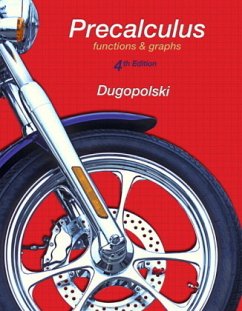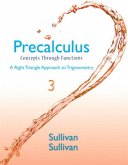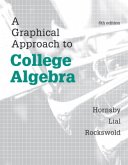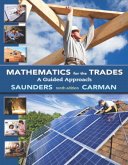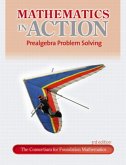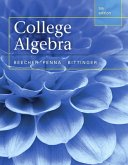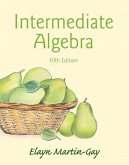DugopolskiÆsPrecalculus: Functions and Graphs, Fourth Edition gives students the essential strategies they need to make the transition to calculus. The authorÆs emphasis on problem solving and critical thinking is enhanced by the addition of 900 exercises including new vocabulary and cumulative review problems. Students will find carefully placed learning aids and review tools to help them learn the math without getting distracted. Along the way, students see how the algebra connects to their future calculus courses, with tools like Foreshadowing Calculus and Concepts of Calculus. Product Description
ALERT: Before you purchase, check with your instructor or review your course syllabus to ensure that you select the correct ISBN. Several versions of Pearson's MyLab & Mastering products exist for each title, including customized versions for individual schools, and registrations are not transferable. In addition, you may need a CourseID, provided by your instructor, to register for and use Pearson's MyLab & Mastering products.
Packages
Access codes for Pearson's MyLab & Mastering products may not be included when purchasing or renting from companies other than Pearson; check with the seller before completing your purchase.
Used or rental books
If you rent or purchase a used book with an access code, the access code may have been redeemed previously and you may have to purchase a new access code.
Access codes
Access codes that are purchased from sellers other than Pearson carry a higher risk of being either the wrong ISBN or a previously redeemed code. Check with the seller prior to purchase.
--
Dugopolski’s Precalculus: Functions and Graphs, Fourth Edition, gives you the essential strategies you need to make the transition to calculus. Throughout this book, you will find carefully placed learning aids and review tools to help them learn the math without getting distracted. The new edition includes over 900 additional exercises that are specifically designed to increase student understanding and retention of the concepts. Along the way, you’ll see how the algebra connects to your future calculus course, with tools like Foreshadowing Calculus and Concepts of Calculus. Dugopolski’s emphasis on problem solving and critical thinking helps you be successful in this course, as well as in future calculus courses.
Features + Benefits
Strategies for Success: Learning aids are strategically placed to give students guidance when they need it.
Function Galleries are designed to help the students link the visual aspects of various families of functions to the properties of the functions. These occur throughout the text and are also gathered together at the beginning of the text.
Art Annotationsmake the mathematical art a better learning tool and easier to use.
Summaries of important concepts are included to help students clarify ideas that have multiple parts.
Strategies show general guidelines for accomplishing tasks. Students can use them to sharpen problem-solving skills.
Procedures are similar to Strategies, but are more specific and more algorithmic. They have also been highlighted in this edition and are designed to give students a step-by-step approach.
Foreshadowing Calculus gives a brief indication of the connection between certain algebraic topics and calculus, and identifies topics that will be continued in calculus.
Concepts of Calculus discussions conclude most chapters, and provide exercises designed to illustrate a specific concept. This full page feature gives students a preview of important topics of calculus, and may be used as a writing or collaborative learning assignment.
Chapter Openers begin with discussion of a real-world situation that uses mathematics from the chapter. Examples and exercises that relate back to the opener are included in the chapter.
Optional Graphing Calculator Discussions appear throughout the text. These are marked by graphing calculator icons so that they can be easily skipped if desired. Students who do not use a graphing calculator can still benefit from the technology discussions, as well as from the calculator-generated graphs that occur in the text. The author treats the graphing calculator as a tool to support and enhance algebraic conclusions, not to make conclusions.
Historical Notes: located in the margins throughout the text, these brief essays are designed to connect the topics of precalculus to the mathematicians who first studied them and to give precalculus a human face.
Milestones along the way: Section exercise sets are rich and varied, giving students many opportunities to practice the skills they will need to succeed in this course and in their future calculus course.
For Thought: each exercise set is preceded by a set of ten true/false questions that review the basic concepts in the section, help check student understanding before beginning the exercises, and offer opportunities for writing and discussion. Assignable in MyMathLab, the answers to all For Thought exercises are included in the back of the student edition.
NEW! Fill-in-the-blank exercises now appear at the beginning of the section exercise sets to help students learn definitions, rules, and theorems. These can be used for reading comprehension and are assignable in MyMathLab.
Writing/Discussion and Cooperative Learning Exercises deepen students' understanding by giving them the opportunity to express mathematical ideas both in writing and to their classmates during small group or team discussions.
Linking Concepts exercises,at the end of nearly every exercise set, are multi-part exercises and explorations that can be used for individual or group work. These encourage students to use concepts from the current section along with concepts from preceding sections (or chapters) to solve problems that illustrate the links among various concepts. Some parts of these questions are open-ended and require more thought than standard skill-building exercises.
Thinking Outside the Box problems throughout the text are designed to get students (and instructors) to do some mathematics just for fun. The problems can be used for individual or group work.
Tying it all together: End-of-chapter material helps students review and synthesize mathematical concepts as they prepare for the road ahead.
NEW! Cumulative review exercises now appear at the end of the section exercise sets to review the skills learned in previous sections and chapters. These exercises are under the heading "Rethinking" and are assignable in MyMathLab.
Highlights at the end of every chapter contain an overview of all of the concepts presented in the chapter along with brief examples to illustrate the concept.
Chapter Review exercises are designed to give students a comprehensive review of the chapter and prepare students for the chapter test.
Chapter Tests measure the students' readiness for a typical one-hour classroom test. Instructors may also use them as a model for their own end-of-chapter tests.
Tying It All Together exercises at the end of most chapters help students review selected concepts from the present and prior chapters and require students to integrate multiple concepts and skills. These exercises are assignable in MyMathLab.
Instructor-friendly tools save time before and during class.
Pop Quizzes are included in every section. These give instructors convenient 8- to 10-question quizzes that can be used in the classroom to confirm comprehension of the basics. Answers are located in the Annotated Instructor's Edition.
Example Numbers appear at the end of the direction line for nearly all groups of exercises, indicating which examples correspond to the exercises. These appear in the Annotated Instructor's Edition, and make it easier to assign homework problems.
P. Prerequisites
P.1 Real numbers and Their Properties
P.2 Integral Exponents and Scientific Notation
P.3 Rational Exponents and Radicals
P.4 Polynomials
P.5 Factoring Polynomials
P.6 Rational Expressions
P.7 Complex Numbers
Chapter P Highlights
Chapter P Review Exercises
Chapter P Test
1. Equations, Inequalities, and Modeling
1.1 Equations in One Variable
1.2 Constructing Models to Solve Problems
1.3 Equations and Graphs in Two Variables
1.4 Linear Equations in Two Variables
1.5 Scatter Diagrams and Curve Fitting
1.6 Complex Numbers
1.7 Quadratic Equations
1.8 Linear and Absolute Value Inequalities
Chapter 1 Highlights
Chapter 1 Review Exercises
Chapter 1 Test
Concepts of Calculus: Limits
2. Functions and Graphs
2.1 Functions
2.2 Graphs of Relations and Functions
2.3 Families of Functions, Transformations, and Symmetry
2.4 Operations with Functions
2.5 Inverse Functions
2.6 Constructing Functions with Variation
Chapter 2 Highlights
Chapter 2 Review Exercises
Chapter 2 Test
Tying it all Together
Concepts of Calculus: Instantaneous Rate of Change
3. Polynomial and Rational Functions
3.1 Quadratic Functions and Inequalities
3.2 Zeroes of Polynomial Functions
3.3 The Theory of Equations
3.4 Miscellaneous Equations
3.5 Graphs of Polynomial Functions
3.6 Rational Functions and Inequalities
Chapter 3 Highlights
Chapter 3 Review Exercises
Chapter 3 Test
Tying it all Together
Concepts of Calculus: Instantaneous Rate of Change of the Power Functions
4. Exponential and Logarithmic Functions
4.1 Exponential Functions and Their Applications
4.2 Logarithmic Functions and Their Applications
4.3 Rules of Logarithms
4.4 More Equations and Applications
Chapter 4 Highlights
Chapter 4 Review Exercises
Chapter 4 Test
Tying it all Together
Concepts of Calculus: The Instantaneous Rate of Change off(x)= ex
5. The Trigonometric Functions
5.1 Angles and Their Measurements
5.2 The Sine and Cosine Functions
5.3 The Graphs of the Sine and Cosine Functions
5.4 The Other Trigonometric Functions and Their Graphs
5.5 The Inverse Trigonometric Functions
5.6 Right Triangle Trigonometry
Chapter 5 Highlights
Chapter 5 Review Exercises
Chapter 5 Test
Tying it all Together
Concepts of Calculus: Evaluating Transcendental Functions
6. Trigonometric Identities and Conditional Equations
6.1 Basic Identities
6.2 Verifying Identities
6.3 Sum and Difference Identities
6.4 Double-Angle and Half-Angle Identities
6.5 Product and Sum Identities
6.6 Conditional Trigonometric Equations
Chapter 6 Highlights
Chapter 6 Review Exercises
Chapter 6 Test
Tying it all Together
Concepts of Calculus: Area of a Circle and p
7. Applications of Trigonometry
7.1 The Law of Sines
7.2 The Law of Cosines
7.3 Vectors
7.4 Trigonometric Form of Complex Numbers
7.5 Powers and Roots of Complex and Numbers
7.6 Polar Equations
Chapter 7 Highlights
Chapter 7 Review Exercises
Chapter 7 Test
Tying it all Together
Concepts of Calculus: Limits and Asymptotes
8. Systems of Equations and Inequalities
8.1 Systems of Linear Equations in Two Variables
8.2 Systems of Linear Equations in Three Variables
8.3 Nonlinear Systems of Equations
8.4 Partial Fractions
8.5 Inequalities and Systems of Inequalities in Two Variables
8.6 The Linear Programming Model
Chapter 8 Highlights
Chapter 8 Review Exercises
Chapter 8 Test
Tying it all Together
Concepts of Calculus: Instantaneous Rate of Change and Partial Fractions
9. Matrices and Determinants
9.1 Solving Linear Systems Using Matrices
9.2 Operations with Matrices
9.3 Multiplication of Matrices
9.4 Inverses of Matrices
9.5 Solution of Linear Systems in Two Variables Using Determinants
9.6 Solution of Linear Systems in Three Variables Using Determinants
Chapter 9 Highlights
Chapter 9 Review Exercises
Chapter 9 Test
Tying it all Together
10. The Conic Sections
10.1 The Parabola
10.2 The Ellipse and the Circle
10.3 The Hyperbola
10.4 Rotation of Axes
10.5 Polar Equations of the Conics
Chapter 10 Highlights
Chapter 10 Review Exercises
Chapter 10 Test
Tying it all Together
Concepts of Calculus: The Reflection Property of a Parabola
11. Sequences, Series, and Probability
11.1 Sequences
11.2 Series
11.3 Geometric Sequences and Series
11.4 Counting and Permutations
11.5 Combinations, Labeling, and the Binomial Theorem
11.6 Probability
11.7 Mathematical Induction
Chapter 11 Highlights
Chapter 11 Review Exercises
Chapter 11 Test
Concepts of Calculus: Limits of Sequences
A. Appendix: Basic Algebra Review
A.1 Real Numbers and Their Properties
A.2 Exponents and Radicals
A.3 Polynomials
A.4 Factorials Polynomials
A.5 Rational Expressions
B. Appendix: Solutions to Try This Exercises
Credits
Answers to Selected Exercises
Index of Applications
Index
DugopolskiGÇÖs Precalculus: Functions and Graphs, Fourth Edition gives students the essential strategies they need to make the transition to calculus. The authorGÇÖs emphasis on problem solving and critical thinking is enhanced by the addition of 900 exercises including new vocabulary and cumulative review problems. Students will find carefully placed learning aids and review tools to help them learn the math without getting distracted. Along the way, students see how the algebra connects to their future calculus courses, with tools like Foreshadowing Calculus and Concepts of Calculus.
Bei diesem Produkt handelt es sich um ein Bundle, bestehend aus einem Buch und einem digitalen Mehrwert.
Deshalb wird dieses Produkt auf der Rechnung mit 19% MwSt ausgewiesen.
ALERT: Before you purchase, check with your instructor or review your course syllabus to ensure that you select the correct ISBN. Several versions of Pearson's MyLab & Mastering products exist for each title, including customized versions for individual schools, and registrations are not transferable. In addition, you may need a CourseID, provided by your instructor, to register for and use Pearson's MyLab & Mastering products.
Packages
Access codes for Pearson's MyLab & Mastering products may not be included when purchasing or renting from companies other than Pearson; check with the seller before completing your purchase.
Used or rental books
If you rent or purchase a used book with an access code, the access code may have been redeemed previously and you may have to purchase a new access code.
Access codes
Access codes that are purchased from sellers other than Pearson carry a higher risk of being either the wrong ISBN or a previously redeemed code. Check with the seller prior to purchase.
--
Dugopolski’s Precalculus: Functions and Graphs, Fourth Edition, gives you the essential strategies you need to make the transition to calculus. Throughout this book, you will find carefully placed learning aids and review tools to help them learn the math without getting distracted. The new edition includes over 900 additional exercises that are specifically designed to increase student understanding and retention of the concepts. Along the way, you’ll see how the algebra connects to your future calculus course, with tools like Foreshadowing Calculus and Concepts of Calculus. Dugopolski’s emphasis on problem solving and critical thinking helps you be successful in this course, as well as in future calculus courses.
Features + Benefits
Strategies for Success: Learning aids are strategically placed to give students guidance when they need it.
Function Galleries are designed to help the students link the visual aspects of various families of functions to the properties of the functions. These occur throughout the text and are also gathered together at the beginning of the text.
Art Annotationsmake the mathematical art a better learning tool and easier to use.
Summaries of important concepts are included to help students clarify ideas that have multiple parts.
Strategies show general guidelines for accomplishing tasks. Students can use them to sharpen problem-solving skills.
Procedures are similar to Strategies, but are more specific and more algorithmic. They have also been highlighted in this edition and are designed to give students a step-by-step approach.
Foreshadowing Calculus gives a brief indication of the connection between certain algebraic topics and calculus, and identifies topics that will be continued in calculus.
Concepts of Calculus discussions conclude most chapters, and provide exercises designed to illustrate a specific concept. This full page feature gives students a preview of important topics of calculus, and may be used as a writing or collaborative learning assignment.
Chapter Openers begin with discussion of a real-world situation that uses mathematics from the chapter. Examples and exercises that relate back to the opener are included in the chapter.
Optional Graphing Calculator Discussions appear throughout the text. These are marked by graphing calculator icons so that they can be easily skipped if desired. Students who do not use a graphing calculator can still benefit from the technology discussions, as well as from the calculator-generated graphs that occur in the text. The author treats the graphing calculator as a tool to support and enhance algebraic conclusions, not to make conclusions.
Historical Notes: located in the margins throughout the text, these brief essays are designed to connect the topics of precalculus to the mathematicians who first studied them and to give precalculus a human face.
Milestones along the way: Section exercise sets are rich and varied, giving students many opportunities to practice the skills they will need to succeed in this course and in their future calculus course.
For Thought: each exercise set is preceded by a set of ten true/false questions that review the basic concepts in the section, help check student understanding before beginning the exercises, and offer opportunities for writing and discussion. Assignable in MyMathLab, the answers to all For Thought exercises are included in the back of the student edition.
NEW! Fill-in-the-blank exercises now appear at the beginning of the section exercise sets to help students learn definitions, rules, and theorems. These can be used for reading comprehension and are assignable in MyMathLab.
Writing/Discussion and Cooperative Learning Exercises deepen students' understanding by giving them the opportunity to express mathematical ideas both in writing and to their classmates during small group or team discussions.
Linking Concepts exercises,at the end of nearly every exercise set, are multi-part exercises and explorations that can be used for individual or group work. These encourage students to use concepts from the current section along with concepts from preceding sections (or chapters) to solve problems that illustrate the links among various concepts. Some parts of these questions are open-ended and require more thought than standard skill-building exercises.
Thinking Outside the Box problems throughout the text are designed to get students (and instructors) to do some mathematics just for fun. The problems can be used for individual or group work.
Tying it all together: End-of-chapter material helps students review and synthesize mathematical concepts as they prepare for the road ahead.
NEW! Cumulative review exercises now appear at the end of the section exercise sets to review the skills learned in previous sections and chapters. These exercises are under the heading "Rethinking" and are assignable in MyMathLab.
Highlights at the end of every chapter contain an overview of all of the concepts presented in the chapter along with brief examples to illustrate the concept.
Chapter Review exercises are designed to give students a comprehensive review of the chapter and prepare students for the chapter test.
Chapter Tests measure the students' readiness for a typical one-hour classroom test. Instructors may also use them as a model for their own end-of-chapter tests.
Tying It All Together exercises at the end of most chapters help students review selected concepts from the present and prior chapters and require students to integrate multiple concepts and skills. These exercises are assignable in MyMathLab.
Instructor-friendly tools save time before and during class.
Pop Quizzes are included in every section. These give instructors convenient 8- to 10-question quizzes that can be used in the classroom to confirm comprehension of the basics. Answers are located in the Annotated Instructor's Edition.
Example Numbers appear at the end of the direction line for nearly all groups of exercises, indicating which examples correspond to the exercises. These appear in the Annotated Instructor's Edition, and make it easier to assign homework problems.
P. Prerequisites
P.1 Real numbers and Their Properties
P.2 Integral Exponents and Scientific Notation
P.3 Rational Exponents and Radicals
P.4 Polynomials
P.5 Factoring Polynomials
P.6 Rational Expressions
P.7 Complex Numbers
Chapter P Highlights
Chapter P Review Exercises
Chapter P Test
1. Equations, Inequalities, and Modeling
1.1 Equations in One Variable
1.2 Constructing Models to Solve Problems
1.3 Equations and Graphs in Two Variables
1.4 Linear Equations in Two Variables
1.5 Scatter Diagrams and Curve Fitting
1.6 Complex Numbers
1.7 Quadratic Equations
1.8 Linear and Absolute Value Inequalities
Chapter 1 Highlights
Chapter 1 Review Exercises
Chapter 1 Test
Concepts of Calculus: Limits
2. Functions and Graphs
2.1 Functions
2.2 Graphs of Relations and Functions
2.3 Families of Functions, Transformations, and Symmetry
2.4 Operations with Functions
2.5 Inverse Functions
2.6 Constructing Functions with Variation
Chapter 2 Highlights
Chapter 2 Review Exercises
Chapter 2 Test
Tying it all Together
Concepts of Calculus: Instantaneous Rate of Change
3. Polynomial and Rational Functions
3.1 Quadratic Functions and Inequalities
3.2 Zeroes of Polynomial Functions
3.3 The Theory of Equations
3.4 Miscellaneous Equations
3.5 Graphs of Polynomial Functions
3.6 Rational Functions and Inequalities
Chapter 3 Highlights
Chapter 3 Review Exercises
Chapter 3 Test
Tying it all Together
Concepts of Calculus: Instantaneous Rate of Change of the Power Functions
4. Exponential and Logarithmic Functions
4.1 Exponential Functions and Their Applications
4.2 Logarithmic Functions and Their Applications
4.3 Rules of Logarithms
4.4 More Equations and Applications
Chapter 4 Highlights
Chapter 4 Review Exercises
Chapter 4 Test
Tying it all Together
Concepts of Calculus: The Instantaneous Rate of Change off(x)= ex
5. The Trigonometric Functions
5.1 Angles and Their Measurements
5.2 The Sine and Cosine Functions
5.3 The Graphs of the Sine and Cosine Functions
5.4 The Other Trigonometric Functions and Their Graphs
5.5 The Inverse Trigonometric Functions
5.6 Right Triangle Trigonometry
Chapter 5 Highlights
Chapter 5 Review Exercises
Chapter 5 Test
Tying it all Together
Concepts of Calculus: Evaluating Transcendental Functions
6. Trigonometric Identities and Conditional Equations
6.1 Basic Identities
6.2 Verifying Identities
6.3 Sum and Difference Identities
6.4 Double-Angle and Half-Angle Identities
6.5 Product and Sum Identities
6.6 Conditional Trigonometric Equations
Chapter 6 Highlights
Chapter 6 Review Exercises
Chapter 6 Test
Tying it all Together
Concepts of Calculus: Area of a Circle and p
7. Applications of Trigonometry
7.1 The Law of Sines
7.2 The Law of Cosines
7.3 Vectors
7.4 Trigonometric Form of Complex Numbers
7.5 Powers and Roots of Complex and Numbers
7.6 Polar Equations
Chapter 7 Highlights
Chapter 7 Review Exercises
Chapter 7 Test
Tying it all Together
Concepts of Calculus: Limits and Asymptotes
8. Systems of Equations and Inequalities
8.1 Systems of Linear Equations in Two Variables
8.2 Systems of Linear Equations in Three Variables
8.3 Nonlinear Systems of Equations
8.4 Partial Fractions
8.5 Inequalities and Systems of Inequalities in Two Variables
8.6 The Linear Programming Model
Chapter 8 Highlights
Chapter 8 Review Exercises
Chapter 8 Test
Tying it all Together
Concepts of Calculus: Instantaneous Rate of Change and Partial Fractions
9. Matrices and Determinants
9.1 Solving Linear Systems Using Matrices
9.2 Operations with Matrices
9.3 Multiplication of Matrices
9.4 Inverses of Matrices
9.5 Solution of Linear Systems in Two Variables Using Determinants
9.6 Solution of Linear Systems in Three Variables Using Determinants
Chapter 9 Highlights
Chapter 9 Review Exercises
Chapter 9 Test
Tying it all Together
10. The Conic Sections
10.1 The Parabola
10.2 The Ellipse and the Circle
10.3 The Hyperbola
10.4 Rotation of Axes
10.5 Polar Equations of the Conics
Chapter 10 Highlights
Chapter 10 Review Exercises
Chapter 10 Test
Tying it all Together
Concepts of Calculus: The Reflection Property of a Parabola
11. Sequences, Series, and Probability
11.1 Sequences
11.2 Series
11.3 Geometric Sequences and Series
11.4 Counting and Permutations
11.5 Combinations, Labeling, and the Binomial Theorem
11.6 Probability
11.7 Mathematical Induction
Chapter 11 Highlights
Chapter 11 Review Exercises
Chapter 11 Test
Concepts of Calculus: Limits of Sequences
A. Appendix: Basic Algebra Review
A.1 Real Numbers and Their Properties
A.2 Exponents and Radicals
A.3 Polynomials
A.4 Factorials Polynomials
A.5 Rational Expressions
B. Appendix: Solutions to Try This Exercises
Credits
Answers to Selected Exercises
Index of Applications
Index
DugopolskiGÇÖs Precalculus: Functions and Graphs, Fourth Edition gives students the essential strategies they need to make the transition to calculus. The authorGÇÖs emphasis on problem solving and critical thinking is enhanced by the addition of 900 exercises including new vocabulary and cumulative review problems. Students will find carefully placed learning aids and review tools to help them learn the math without getting distracted. Along the way, students see how the algebra connects to their future calculus courses, with tools like Foreshadowing Calculus and Concepts of Calculus.
Bei diesem Produkt handelt es sich um ein Bundle, bestehend aus einem Buch und einem digitalen Mehrwert.
Deshalb wird dieses Produkt auf der Rechnung mit 19% MwSt ausgewiesen.

